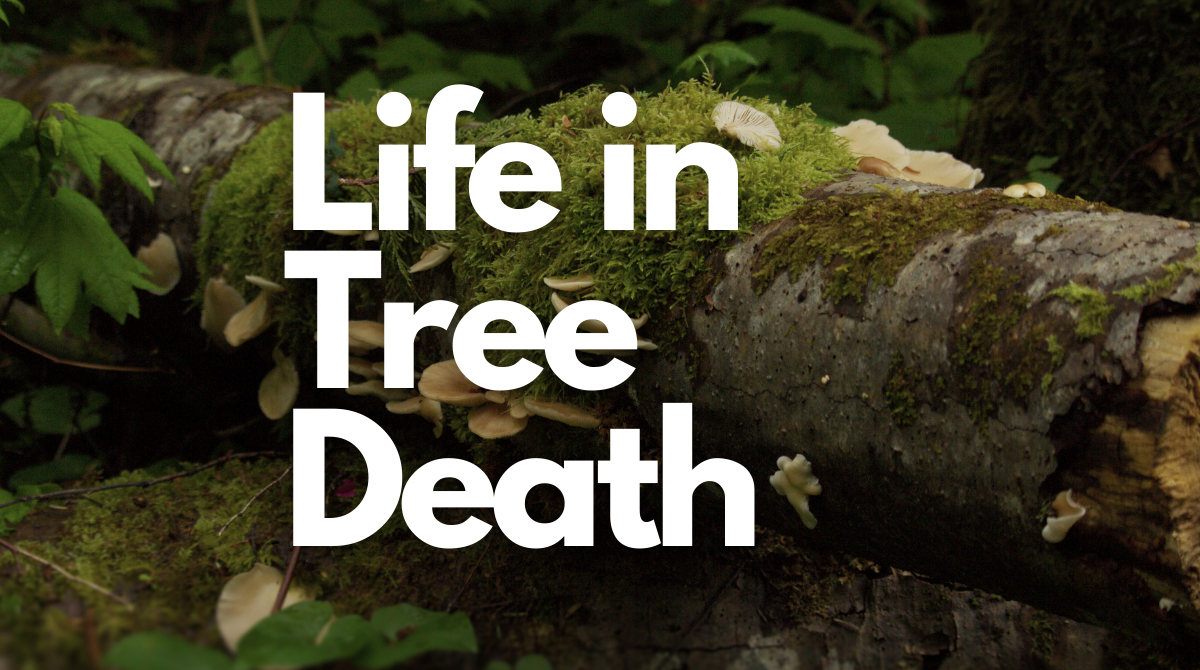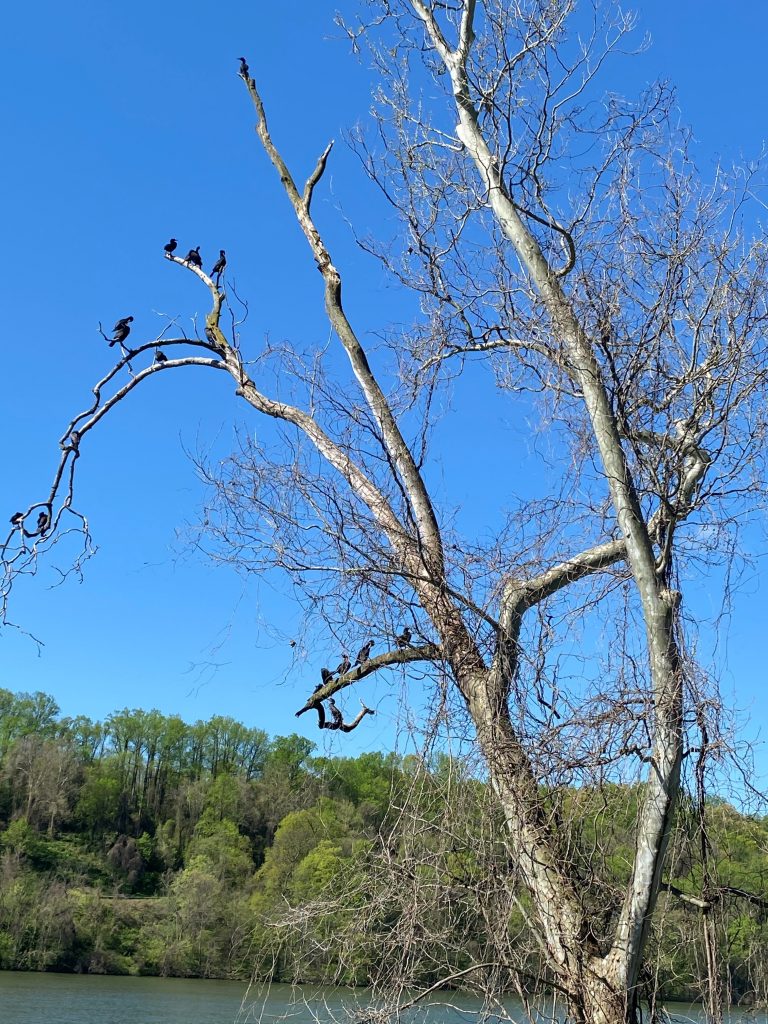Life in Tree Death

Tree of August 2021: Southern Magnolia
8.03.21
Tree of September 2021: Loblolly Pine
9.02.21
By: Kate Bolkin
At first glance, you might think a dead tree is useless. They can’t bloom flowers in the spring, they don’t grow leaves for shade, and maybe they look a little ugly. But dead and dying trees (so long as they are in a safe location) provide tons of benefits to our ecosystem. In fact, death is often the catalyst for new life.
Once a tree can no longer sustain the resources it needs to stay alive, it will begin to “senesce” or deteriorate with age. During senescence, the tree’s once-strong defense system will weaken, inviting a slew of insects, diseases, and other natural predators to feast on the tree. Meanwhile, decomposers, such as bacteria and fungi, weasel their way in and break down woody tissue. Eventually, the tree falls.

Although it is not a pretty sight, the decomposition of plant material is one of the most important processes for ecosystem health. Nutrients that were held inside of the tree for decades or even centuries are now released back into the soil. This massive addition of nutrients acts like a natural fertilizer, and gives seeds and saplings a boost of energy to grow. Not to mention the additional sunlight on the forest floor that was once blocked by the mature tree gives young, starter trees a better chance at life.
Probably the most fascinating aspect of decaying trees is the way they help out their neighbors. A study by ecologist Suzanne Simard found that up to 40% of the carbon stored in a dying tree will transfer over to the living trees that surround it by way of mycorrhizal networks, which are symbiotic fungi that live within trees’ roots. The remaining carbon is released during the decomposing process. Trees are truly social creatures that help each other even until their final days.
Not only do we see ecological benefits from tree death on a chemical level, but our feathery and furry friends love them too. Dead and dying trees with hallow cavities make luxury homes for a variety of wildlife, including owls, songbirds, squirrels, opossums, raccoons, bears, and bats. Many animal-moms, like deer, foxes, and bobcats, use hallow trees and logs as a place to temporarily hide their young from predators while they go out and find food.
In the past, foresters used to remove decaying logs from the forest floor, claiming that they were “unsightly”. Today, we have a much better understanding of the beauty and life that comes from the rot. So, if you have a senior tree that is in a safe spot (away from nearby structures, traffic, and pedestrians), consider allowing it to complete its journey into senescence. Nature will thank you for it.



